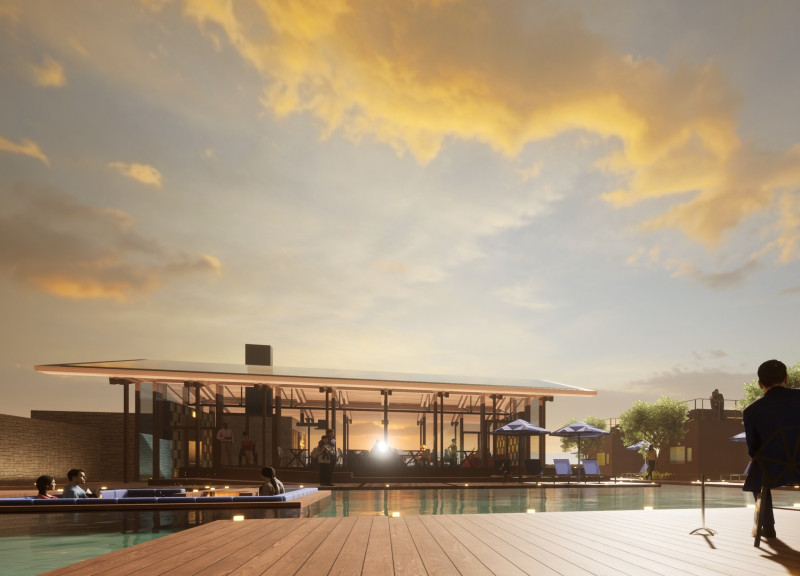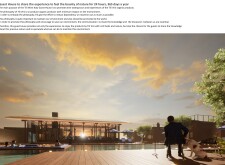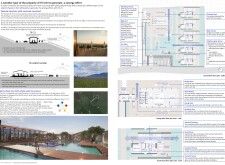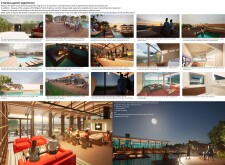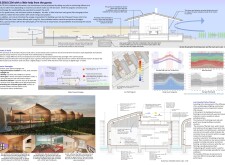5 key facts about this project
The structure of the guest house features a fluid spatial configuration, encouraging guest interaction with both the interior and exterior environments. Open courtyards serve as communal spaces, allowing for social gatherings and fostering a sense of community among visitors. Multi-purpose terraces provide additional areas for activities, encouraging diverse uses ranging from workshops to shared meals. The overall layout is designed to enhance the user experience while maintaining functional efficiency.
Innovative design approaches set Tili Vini Guest House apart from other hospitality projects. The project employs a range of sustainable practices, including the use of passive solar design, which maximizes natural daylight and minimizes energy consumption. The building is oriented to take full advantage of prevailing winds for natural ventilation, reducing the need for mechanical heating and cooling systems. Materials selected for the project—wood, galvanized metal, natural stone, and gravel—are not only aesthetically pleasing but also contribute to the building's environmental objectives. Wood serves as the primary structural element due to its low carbon footprint and thermal efficiency, while the galvanized metal enhances durability and modernity in design.
The architectural design integrates rainwater harvesting systems that contribute to irrigation and further reduce water consumption. These systems exemplify the project's commitment to sustainability while offering an educational element for guests interested in ecological practices. The design also facilitates natural connections to the local ecosystem, with pathways leading guests through the landscape, enhancing their interaction with the vineyard.
For more insights into the Tili Vini Guest House, including architectural plans and sections, we invite readers to explore the project presentation in detail, uncovering the architectural ideas that inform its innovative design. Understanding these elements will provide a deeper appreciation of the project's significance in contemporary sustainable architecture.


